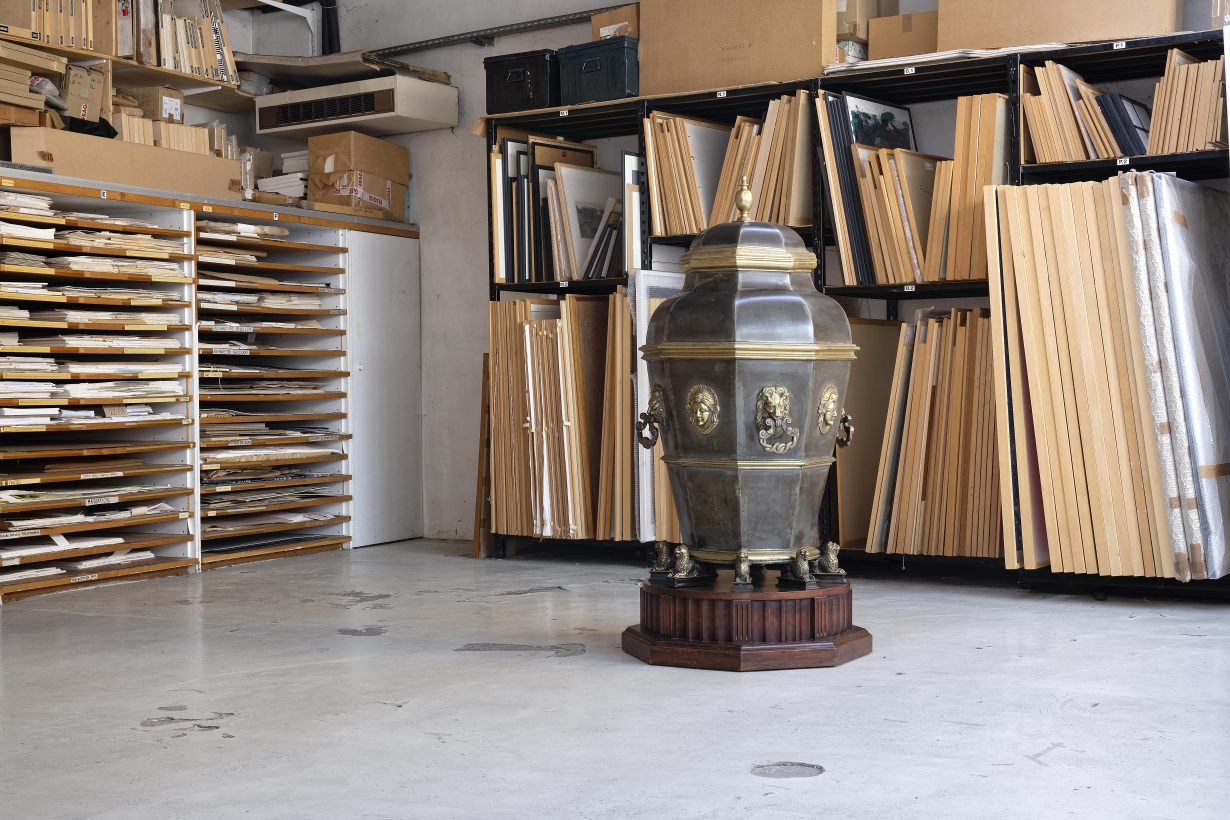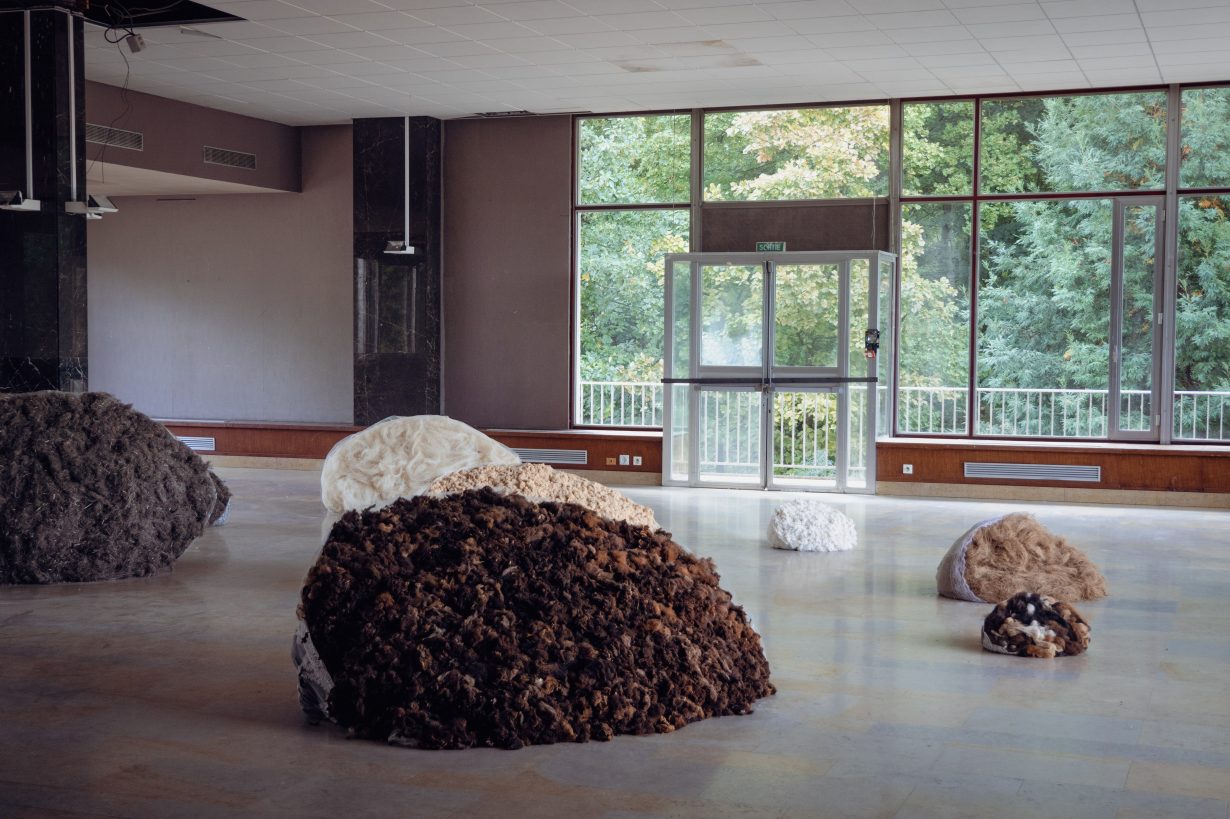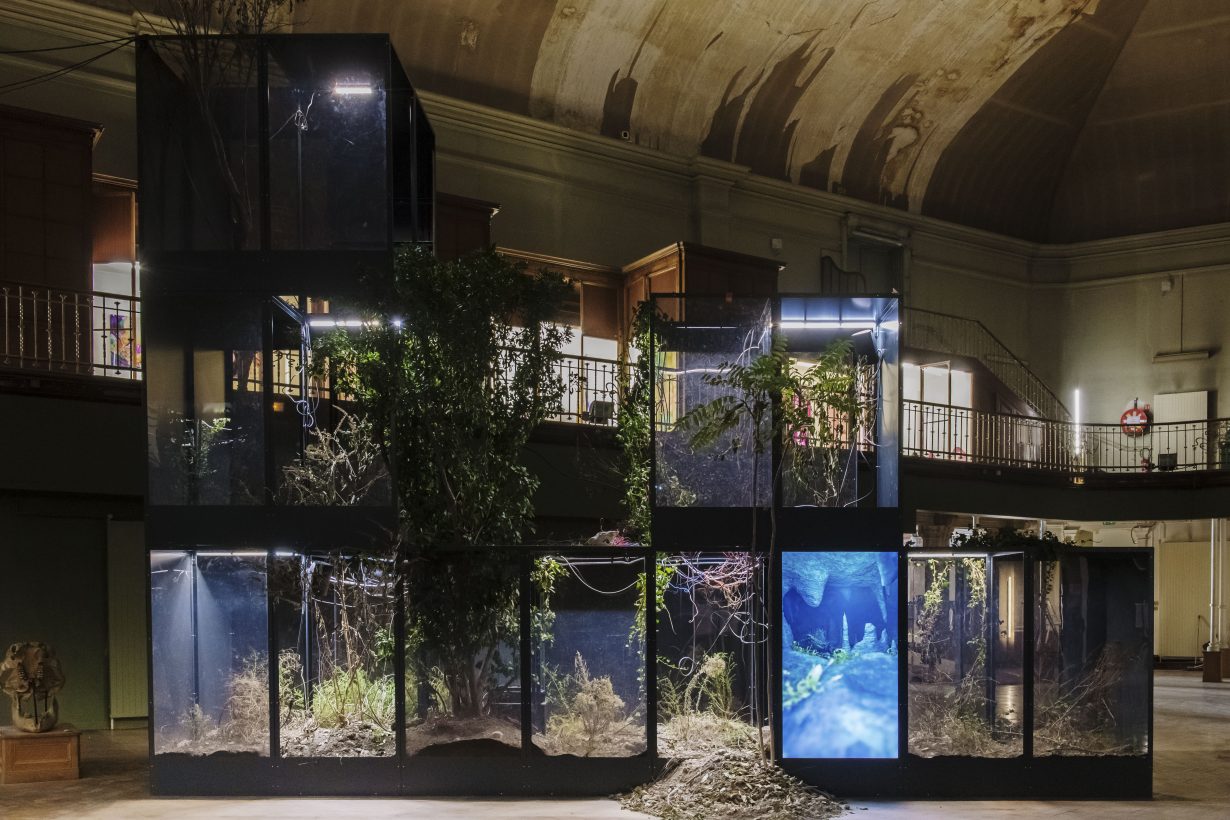The 2022 edition, manifesto of fragility, exploits the Lyonese locale’s peculiar urban pattern with mixed but largely positive results
“What was it like to be electrified for the first time?” The question booms out from a loud-hailer overlooking a manmade lake in Lyon’s idyllic Parc de la Tête d’Or. It is addressed to the city itself, the hilly skyline and distinctive architecture of which lie resplendent in the distance. Further queries follow every few minutes, the pauses just long enough to suggest that the interrogator, a female voice acting as a proxy for South African artist James Webb, genuinely expects answers from France’s third-largest city – and might be a little disappointed not to have received any. The work is a component of manifesto of fragility, the sixteenth edition of Lyon’s contemporary art biennial, an event that exploits the locale’s peculiar urban pattern – a combination of former industrial quarters, implausibly steep hills and haut-bourgeois enclaves – with mixed but largely positive results.

Webb’s installation, entitled A Series of Personal Questions addressed to the City of Lyon (2022), is one of five interrogatory sound pieces he currently has scattered around Lyon: other ‘interviewees’, whether addressed at a distance from loudspeakers or displayed in individual installations, include a Roman coin discovered nearby, a medicine vial that once contained an astonishingly popular quack remedy and the city’s contemporary art museum, itself a principal biennale venue. The adjectives you might use to describe Webb’s contributions could pretty well sum up the biennale itself: whimsical, but interesting. The biennale’s title can be interpreted on at least two levels. Curators Sam Bardaouil and Till Fellrath say they wanted to underline how a collective acceptance of fragility can actually be a source of strength; and, whether formally or thematically, many exhibits here could be seen to reflect this perspective – however vaguely. Just as palpable is the reverse reading, that apparent strength can belie fragility: throughout, we are constantly reminded how quickly and irreversibly seemingly solid entities (empires and nation states, for instance) can spiral into chaos. It’s to Bardaouil and Fellrath’s credit that only rarely is this true of the biennale itself.
The central venue (of six) is the Usines Fagor, a temporarily repurposed former car factory. Brobdingnagian in scale, it is a dubious structure in which to showcase contemporary art. While some works stand out – particularly Nicolas Daubanes’s Je ne reconnais pas la compétence de votre tribunal !’ (2022), a building frame containing an exhaustively researched recreation of a Lyon military courtroom, in which Algerian resistance fighters were sentenced to death in show trials – much is lost in the chaotic arrangement of the space. There are misfires: the acres of space given over to the neo-Boschian nightmare paintings of Sylvie Selig could have been scaled back, and Spanish street artist Julio Anaya Cabanding’s ripped-up reproduction of Théodore Chassériau’s Le Christ au Jardin des Oliviers (1840) is just wilfully inane.

Happily, things improve. Perhaps inevitably for the first post-lockdown edition of the biennale, much of the more arresting work here is studiously postapocalyptic: elsewhere in the Parc de la Tête d’Or, Nina Beier has filled an abandoned pavilion – closed because of asbestos – with huge mounds of organic and mineral detritus; only just visible through the structure’s dusty windows, it’s a monumental and remarkably uncanny proposition. Meanwhile at Lugdunum, a magnificent brutalist museum complex devoted to the city’s Gallo-Roman origins, Czech artist Klára Hosnedlová’s installation Sound of Hatching (2022) sees a room-sized window recess filled with busted-up furniture and long strands of textiles and epoxy casts of unidentifiable objects. The window itself is covered with rust-coloured, semitransparent foil, filling the space with an eerie Martian light.
Similar dystopian flourishes creep into one of the biennale’s two genuine showstoppers, a display at the Musée Guimet. Formerly housing Lyon’s natural history museum, this place has stood vacant since 2007 and the neglect shows. In a state of progressive decay, the building’s labyrinthine service corridors and mothballed galleries propose a thrilling venue for a contemporary art exhibition, its otherwise empty display cases yet to be cleared of the caption cards for the exhibits they once contained. At the centre, in a cavernous central atrium, is Ugo Schiavi’s enormous installation Grafted Memory System (2022), composed of huge stacks of blinking lcd monitors and tall vitrines stuffed with fossils and rotting foliage.There’s a fair bit of gross-out daftness – for example Puck Verkade’s Plague (2019), a stop-motion animation in which a woman is devoured by a giant fly – but overall it’s an enthralling group presentation, mixing site-specific installations like Evita Vasiljeva’s Impulse ( J or Imp) (2020–22), a terrifying display of flashing light and white noise, with the likes of Leyla Cardenas’s delicate offering, Self-contained Withstander (2022), in which photographs of the museum as it was are sublimated onto hundreds of strands of polyester silk.

The other undisputed triumph is an exemplary exercise in rediscovering the unsung modernism(s) of the Middle East. Bardaouil and Fellrath have form in this area, having been behind a widely praised showcase of Egyptian surrealism at Paris’s Centre Pompidou, but Beirut and the Golden Sixties, a thematic survey of the Lebanese capital’s art scene prior to the 1975–90 civil war, is a fascinating dive into a tragically lost world of cosmopolitanism and creativity. Previously presented standalone at Berlin’s Gropius Bau, the show mixes archival material and documentary photography with some frequently first-rate art, much of it by little-celebrated practitioners. Among the highlights are Paul Guiragossian’s 1960 painting of Armenian refugee camps on the city’s periphery and painter Huguette Caland’s fleshy, erotic Surrealism; later, she would put her name to the devastating Guerre Incivile (1981), an impasto-heavy, candy-pink abstract canvas, its surface pockmarked with deep crimson lesions, like weeping sores.
Lyon is a fabulous setting for this sort of event. Carved up by the Rhône and Saône rivers, which make their confluence here, its dramatic topography, size and transalpine character make it the kind of place that could pass for some platonic ideal of what a central-western European city should look like. Yet by and large, the location does not eclipse the art itself – and while many such affairs are merely convenient tourist itineraries through the lesser-explored parts of secondary or tertiary cities, that is very much to be applauded.
16th Biennale de Lyon: manifesto of fragility, Various venues, Lyon, through 31 December
